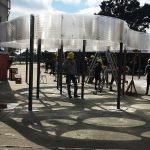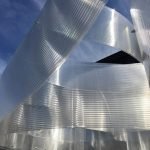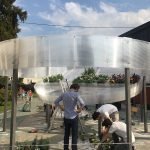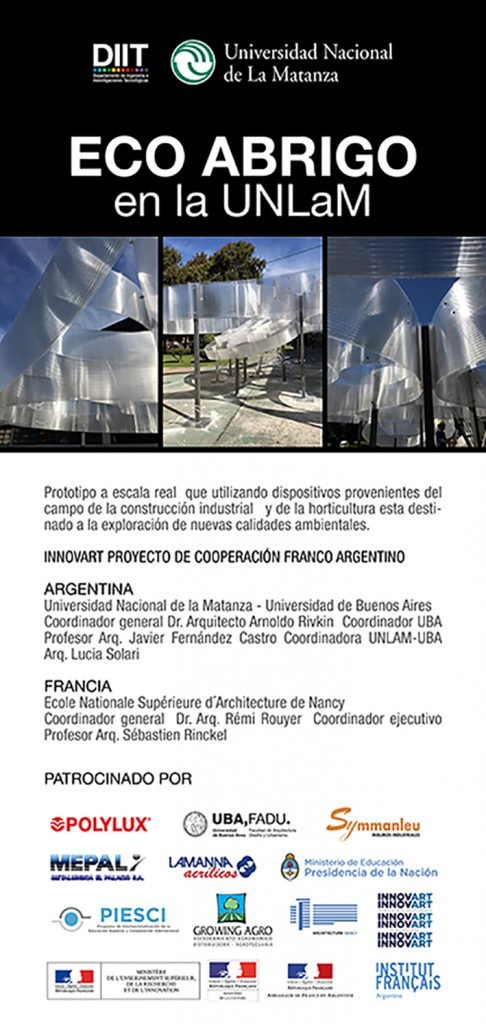Bioclimatic Oases
Arnoldo Rivkin, Rémi Rouyer, Sébastien Rinckel
Device made in Buenos Aires (La Matanza)
It is a full-scale prototype that can demonstrate the potential
of architecture for a sustainable city..
1) Whatever-is-at-hand Economy
On one hand, an experimental manipulation makes it possible to transpose standardized components produced by the industry. In this way, bended polycarbonate cladding sheets become part of a roofing structural system
On the other hand, using horticultural technology facilitates the creation of a microclimate-controlled environment. In this way, soilless culture plants create a vegetation shade house thus becoming a bioclimatic shelter.
2) Embellish “with” nature
Discreet natural expanses grafted onto the built environment create a network of landscaped oases in the urban fabric, without depleting land resources or reducing its density.
In addition, placing green layers (artificial canopies) over the existing fabric creates a bioclimatic in-between space that embellishes the city, now enriched by new uses of the urban space.
3) Fragment and process
The realization of this device cannot be reduced to an artistic or constructive experience. It has a conceptual and theoretical dimension provided that the concept in question does not precede the concrete experimentation but is deduced from it. As a type to reconfigure and not a model to imitate, its reproducibility should not be confused with the mass-production replica of a fixed shape. It is a logic arising from an application process and not the application of an abstract rule.
The range of variations of the type depends on its constructive logic (whatever-is-at-hand economy) and its forms of appropriation (bioclimatic oases).







